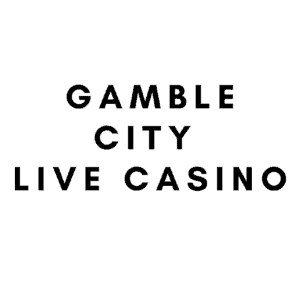So many people are looking on the web to find a good article that tells about the most successful roulette strategy. Yes, you are in the right place, we will disclose all of the tips and tricks for you to be great at roulette. Roulette systems based on probabilities aim to achieve a positive result. There are many strategies by which you can win. This book describes systems that will help you succeed and systems considered wrong. Knowing these strategies is very important for roulette players because, with their help, you will avoid common mistakes.
Successful Roulette Strategy: “Player’s Happiness”
Roulette systems based on probabilities aim to achieve a positive result. They are often relatively easy to play and sometimes successful. Still, they usually fail in the long run, mainly because they try to force a winning outcome by having too high a risk-to-win ratio—that is, players are risking a lot for a small win. One bad streak and all accumulated winnings, or even more, are lost.
The Player’s Happiness system does not aim to force a win and has a meager risk/reward ratio. It uses the player’s turns of luck to create a controlled growing advantage.
The general strategy is as follows:
- Your loss rate in each game session is low, and your total loss is adequately limited.
- There is no limit to the size of the winnings as long as the income grows.
- When lucky and the player wins, the bets become more intense, giving a significant boost to winnings and average income.
Player Happiness is one of the few, if not the only, system that allows you to stay in the black all the time. If your priority is to play to win, then this system will give you an excellent opportunity to become the king of roulette and win all the time. If your priority is playing for fun, you may find applying and generating income challenging.
Player Happiness has a realistic approach and does not try to win every game session or casino entry. Experience says this is a compelling goal and perhaps the best way to become a successful player.
The Player’s Happiness system is focused on exploiting randomness and lucky turns in the game. It sets limits perfectly, and you’ll know exactly when it’s time to walk away, and walking away victorious at any point in a game session means something. It is easy to understand and considers the “good mood” factor since mood and luck go hand in hand.
“Gambler’s Happiness” applies to single or double zero roulette, paying 35:1 per number. It applies to all tables and wheels.
The system’s primary goal is to get into the plus and stay in it. The second goal is to increase your income over time progressively.
The system considers that for each cycle of the wheel of 38 games, some numbers fall out more often than others, which may not fall out at all, and works on “internal” rates, on numbers. Once you start practicing with it – get used to it at home first – you’ll find that it’s straightforward to play and covers every aspect of the game.
You will need some amount of money, some luck, and some patience. The system has 30 years of experience in roulette and some points you may not immediately understand. For optimal use, you must read all of the following text and apply it precisely.
Bank and rates
You can play one or more sessions during each visit to the casino. It doesn’t matter if you play daily, once a week, once a month, or not regularly. The player’s bank in each session is determined by 20 units (chips). All visits in the amount should add up to give you the final “net” – income.
If you play more than one session per visit, you must end each session following the “When to leave” section and then move to another table where you can start a new session. Or you can take a short break: wait for a little if you are in the black and more extended if you are in the red.
After you master the system, you can move on to the “Advanced Game.”
You play for the maximum payout, that is, for a bet on the number. This is the most effective bet in roulette and the least prone to the house edge. You must play for one number, which remains the same throughout the session. You may be the only player at the table playing for the same number, and you may feel discomfort. Stay calm, and you will get used to it in time.
It would be best if you played each spin, one chip per number, except for the very first bet in the session. If you win, double your bet on the number you win. As soon as you win, and ONLY right after the win, place double bets on different sides of your main number, that is, on the neighbors of the number on the wheel, as if increasing the “trap” by the number three times.
For example, if you play number 29, then after rolling 29, double your bet and place double bets on 7 and 18 – neighbors of 29 on the wheel (European, on other wheels, the neighbors may be different).
Look at the wheel where the ball fell and read the numbers from that place.
If you win again, you double again by placing four bets on each of these three numbers, but now you add two more neighbors of your number ON THE TABLE and not on the wheel. In our case, these are numbers 28 and 30 (if the table number became 36 or 0, then cyclicity is assumed that the neighbors of 36 will be 35 and 0). You place five bets of four units on each of these five numbers (7, 29, 18, 28, and 30).
You win three times – 29, 29, and 7 fell out. Your bets will change in this way: one chance on 29 to start, then two stakes on each of the numbers 7, 29, and 18, then four bets on five numbers 7, 29, 18, 28, 30, and such a series ends with bets of 8 units on the same five numbers (a maximum of 5 numbers is played).
If you keep winning in a row (it doesn’t matter which of the five numbers wins), you keep doubling down on the same five numbers up to the limit set by the casino and keep betting the maximum.
Be prepared for this. When you reach 16 units per number, all eyes will be on you, but don’t let anyone or anything confuse you. Keep doubling (you’ll need higher value chips, so prepare your bets early). After losing, return to one number, to a bet of one unit, but the next time you win, repeat the whole procedure. This is a rare occurrence; you never know when it will happen again.
If you are up by more than 20 units and your “lost chips” are more than 11, your initial bet per number doubles. You start betting two units per number at once until there are no “losing” chips 10 or 11, and you return to the single bet on the number.
As for the first bet, your first bet in the session must necessarily be in the form of three single bets on the selected number and its neighbors. If you choose 29, the first bet will be one unit on 29, 7, and 18. If you won the first spin, your next bet would be doubling on these three numbers plus a double bet on two neighbors on the TABLE. Note that a bet on five numbers after one win only applies to the first bet (usually on five numbers after two consecutive wins).
After losing, play a single bet on your number.
How to choose a number for better roulette strategy
Pick a table that suits your minimum, and play that table for the entire session. Stock up on time and, if possible, give preference to loaded tables. Since you will be playing one number most of the time, you won’t need much space and need to feel comfortable and relaxed. If you can’t reach your bet, ask the dealer about it.
You can choose any number, including zero, as long as that number remains among those appearing. This means that he was winning while you were at the table.
Before deciding which number to stop at, exchange money for chips (20 units) and wait for at least one spin. You can stop at the first number drawn or any subsequent one. You must choose your number immediately and place a bet on it, and as mentioned for the first bet, on its two neighbors.
You go for a recurring result and determine the main number for the entire session. If you don’t want to pick the number, just bet on the first one. Keep the same number for as long as you can. If you prefer to change numbers, do so at intervals, say every 30 or 50 sessions.
Bet sizing in roulette strategy
The preferences of the player determine the size of the bet. It can be the table minimum or a higher amount. If you initially chose the bet size for yourself, but after successfully testing the system, you want to move to a new level, then make sure that your income is sufficient to withstand at least ten gaming sessions at this level. The main thing is that you feel comfortable at this level of rates.
Don’t get overconfident after the first few successful sessions. You’re bound to run into nasty streaks, and sometimes they’ll be reasonably constant. If the table maximum is $200, then your single bet should not exceed $25.
When to end the game for a good roulette strategy
If you win – that is, you beat at least once in a session, and you should do it – then you are with your bank plus some winnings. If you can, ask that you pay your winnings in chips one at a time for as long as possible before moving on to larger chips.
Stack all your chips next to your bank in stacks of 20, and don’t scatter them. Play for these “losing” chips and those that are missing from the pile of 20 pieces. Once the “losing” chips are gone, it’s time to go.
The only exception to splitting a stack of 20 chips is when you need to bet double on three or five numbers, and there aren’t enough chips.
If the board is broken, continue playing depending on the number of “losing” chips. If you had only one win per session, but it happened at the beginning of it on your first ten chips, then a profit of 20 chips is guaranteed. If you win once, but at the end of the session, on the last ten chips, then after doubling the bets, you will return your bank, but there will not be enough chips for a stack of 20 pieces. In this case, make a stack of 10 chips, meaning your income, and all the rest will be “losing,” which you will play.
Let’s say your first win happened on the last bet with your previous chip. You get 35 chips plus one – the one you bet (total 36). You double your bet on the main number and bet two doubles on your neighbors for a total of 6 chips. Divide the remaining 30 chips into a stack of 20 chips, rebuilding your bank, one stack of 10 chips, and no “losing” chips.
If you lose a spin, you are left with ten chips, but if you win again, split everything into the 20s and continue playing as described above in the “Bank and bets” section. If you fail, your total loss will be 20 units per session. If you play more than one session per call, your loss must not exceed 60 units.
As a rule of thumb, stop playing for every single play if you’ve lost three sessions in a row or feel your confidence has dropped. The exception would be if you’re winning big and your spirit is high, you can keep playing as long as you want. In any case, it is better not to play more than one session if you have had two total losses in the last two visits to the casino.
A little arithmetic Part of Roulette Strategy
Since you bet three single chips on the first spin of your game series, you have 17 chips for another 17 spins, for a total of 18 spins. In one game session, on double-zero roulette, taking into account three single bets as a start and considering 18 spins out of 38, your chances of winning are just over 50%. That’s 20 out of 38 (20 out of 37 for single zero).
Let your chances of winning be 50:50, then theoretically, you should be equally divided with the casino on a large number of attempts, winning and losing sessions through one. In practice, this is not the case. You will win and lose in succession, drawing in the long run.
But there is a difference: on an unsuccessful series, you lose 20 units. On a rather unfortunate streak, you lose 20 units. On an unlucky streak, you lose 20 units. On a highly unlucky streak, you lose 20 units.
On a successful streak, you win 10–20 units. On a reasonably successful streak, you win 40-80 units. On a successful streak, you win 100-200 units. On a highly successful streak, you win; who knows how much? 500 units? Or perhaps 1000 units?
Let’s take a look together. In a winning session, 50% (10 units) of income is the minimum. 100% to 400% (20-80 units) is common. Income from 500% to 1000% is rare (three wins in a row give 160 income units). Getting four or more wins in a row is unlikely, but still possible. Four consecutive wins provide a win of 360 units, and five wins – 780. Each next win will more than double the previous win.
In the short run, the average expected return will fluctuate between lucky and unlucky outcome sequences and change based on the player’s luck. Like the Player Happiness system, there is no target win amount.
Over the long run, expect up to 10 units per session, which differs from player to player. If you are up by 200 units, the chances that you are in the black and stay are very high. If, after several gaming sessions, you were fortunate and are in the black by up to 200 units in total, then you will need ten unsuccessful series in a row to reset your income. It’s possible but extremely unlikely.
Risk and Capital for Successful Roulette Strategy
On paper, things can be auspicious, but there must be some limit to the risk. You can start winning from the very beginning, go far ahead, be able to withstand losses, and never look back. On the other hand, you may lose at the beginning and have to pull more money out of your pocket to continue playing and start winning. In this case, your capital exposure will be your first 20 units.
To be fully equipped in the face of an opportunity, you must be willing to play multiple game series to get into a comfortable winning level zone.
No doubt some players will be lucky, and some won’t work after a few initial sessions, but on average, ten sessions will be enough capital risk to beat any possible lousy start.






